Softener role: to scale, soften the water to reduce water hardness, to calcium and magnesium ions, simple installation, small footprint, large water production, the water can reach the national soft water standards, stable water production, long service life.
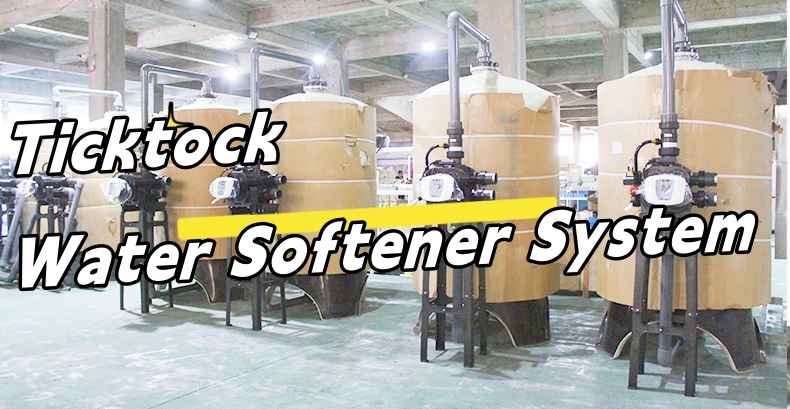 What is Water hardness?
Hard water is water that has high dissolved mineral content (as opposed to soft water having a low dissolved mineral content).
Hard water has high concentrations of calcium (Ca2+) and magnesium (Mg2+) ions. Hardness in water is defined as concentration
of multivalent cations. Multivalent cations are cations (metal ions) with a charge greater than 1+, mainly 2+. These cations
include Ca2+ and Mg2+.
What is Water hardness?
Hard water is water that has high dissolved mineral content (as opposed to soft water having a low dissolved mineral content).
Hard water has high concentrations of calcium (Ca2+) and magnesium (Mg2+) ions. Hardness in water is defined as concentration
of multivalent cations. Multivalent cations are cations (metal ions) with a charge greater than 1+, mainly 2+. These cations
include Ca2+ and Mg2+.
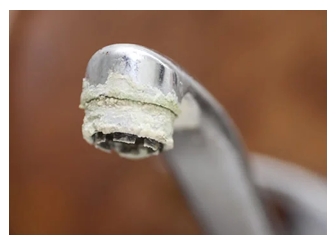 These ions enter a water supply by leaching from minerals (such as limestone) within an aquifer. Common calcium-containing
minerals are calcite and gypsum. A common magnesium mineral is dolomite which also contains calcium. Rainwater and distilled
water are soft, because they contain few ions. Hard water is typically found in ground water (wells) as the water is in direct
contact with minerals which can be dissolved. Surface water (lakes, rivers or streams) is generally soft with very low levels of hardness.
Hard water is generally not harmful to one’s health but can pose serious plumbing problems in both residential and commercial
applications. From the lack of suds formation in bathing and laundry applications to the costly breakdowns in boilers, cooling
towers and other equipment that handle water, water hardness is a serious issue.
The following equilibrium reaction describes the dissolving/formation of calcium carbonate scales:
CaCO3 + CO2 + H2O = Ca2+ + 2HCO3–
Calcium and magnesium ions can be easily removed by the ion exchange process.
What is Ion exchange process?
Water softening is a process that deals with a problem called “hard water.” Hard water is any type of water that contains more
minerals than average tap water. Mostly it has to do with elevated levels of calcium and magnesium, which can make it difficult
for products like soap to dissolve in the water. It can also leave hard water stains on bathtubs or sinks and clog pipes.
Water softening is a process in which the ions of calcium, magnesium and sometimes iron are removed. It is these ions in hard
water that make it difficult for products with other positively charged ions to dissolve in the water. By doing this, the water
softening removes the offending minerals from the water.
These ions enter a water supply by leaching from minerals (such as limestone) within an aquifer. Common calcium-containing
minerals are calcite and gypsum. A common magnesium mineral is dolomite which also contains calcium. Rainwater and distilled
water are soft, because they contain few ions. Hard water is typically found in ground water (wells) as the water is in direct
contact with minerals which can be dissolved. Surface water (lakes, rivers or streams) is generally soft with very low levels of hardness.
Hard water is generally not harmful to one’s health but can pose serious plumbing problems in both residential and commercial
applications. From the lack of suds formation in bathing and laundry applications to the costly breakdowns in boilers, cooling
towers and other equipment that handle water, water hardness is a serious issue.
The following equilibrium reaction describes the dissolving/formation of calcium carbonate scales:
CaCO3 + CO2 + H2O = Ca2+ + 2HCO3–
Calcium and magnesium ions can be easily removed by the ion exchange process.
What is Ion exchange process?
Water softening is a process that deals with a problem called “hard water.” Hard water is any type of water that contains more
minerals than average tap water. Mostly it has to do with elevated levels of calcium and magnesium, which can make it difficult
for products like soap to dissolve in the water. It can also leave hard water stains on bathtubs or sinks and clog pipes.
Water softening is a process in which the ions of calcium, magnesium and sometimes iron are removed. It is these ions in hard
water that make it difficult for products with other positively charged ions to dissolve in the water. By doing this, the water
softening removes the offending minerals from the water.
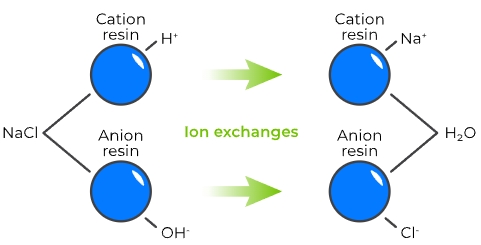 A water softener is a device that exchanges cations. What this essentially does is take the cations of calcium and magnesium
(the two most common causes of hard water) and replace them with the cations of another substance. Most typically the ions are
exchanged with ions from dissolved sodium chloride salt (brine).
Why we choose Ticktock Water softener?
Eliminating or reducing water hardness is done with a piece of equipment known as a water softener. It is inside this softener
where the ion exchange process occurs. A softener is comprised of different components, each having their own unique purpose.
The heart of the softener is the mineral tank which is a pressure vessel usually constructed out of fiberglass. These tanks are
filled with negatively charged ion exchange resin. The brains of the softener lie in the control valve or softener head as it is
commonly referred to. Most popular water softeners have an automatic regenerating system. The most basic type has an electric
timer that flushes and recharges the system on a regular schedule. During recharging, soft water is not available. A second type
of control uses a computer that watches how much water is used. When enough water has passed through the mineral tank to have
depleted the beads of sodium, the computer triggers regeneration. These softeners often have reserve resin capacity, so that
some soft water will be available during recharging. A third type of control uses a mechanical water meter to measure water
usage and initiate recharging. The advantage of this system is that no electrical components are required and the mineral tank
is only recharged when necessary.
When it is equipped with two mineral tanks, softened water is always available, even when the unit is recharging.
A water softener is a device that exchanges cations. What this essentially does is take the cations of calcium and magnesium
(the two most common causes of hard water) and replace them with the cations of another substance. Most typically the ions are
exchanged with ions from dissolved sodium chloride salt (brine).
Why we choose Ticktock Water softener?
Eliminating or reducing water hardness is done with a piece of equipment known as a water softener. It is inside this softener
where the ion exchange process occurs. A softener is comprised of different components, each having their own unique purpose.
The heart of the softener is the mineral tank which is a pressure vessel usually constructed out of fiberglass. These tanks are
filled with negatively charged ion exchange resin. The brains of the softener lie in the control valve or softener head as it is
commonly referred to. Most popular water softeners have an automatic regenerating system. The most basic type has an electric
timer that flushes and recharges the system on a regular schedule. During recharging, soft water is not available. A second type
of control uses a computer that watches how much water is used. When enough water has passed through the mineral tank to have
depleted the beads of sodium, the computer triggers regeneration. These softeners often have reserve resin capacity, so that
some soft water will be available during recharging. A third type of control uses a mechanical water meter to measure water
usage and initiate recharging. The advantage of this system is that no electrical components are required and the mineral tank
is only recharged when necessary.
When it is equipped with two mineral tanks, softened water is always available, even when the unit is recharging.
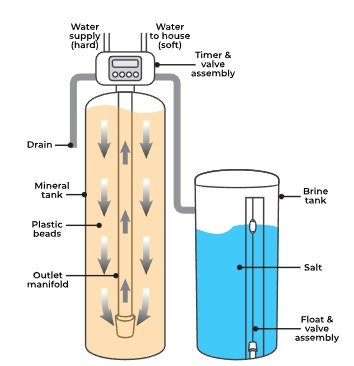 <img class="alignnone wp-image-4849" src=”https://www.ticktockwater.com/wp-content/uploads/2023/09/how-to-work-sf-scaled.jpg” alt=”” width=”579″ height=”470″ />
The third main component of a water softening system is the brine tank. The brine tank is basically a storage tank for sodium
chloride (NaCl) or potassium chloride (KCL) which is mixed with water during the brine refill and regeneration cycles.
This brine (a concentrated solution of salt water) is drawn back into the mineral tank during the regeneration phase to
replenish the softener bed. The salt or potassium chloride is a sacrificial media and must be replenished on a regular
basis to ensure adequate softening form the device.
What is ion exchange resin?
The primary media contained within a water softener is known as ion exchange resin. This resin is basically an insoluble
matrix typically in the shape of small (1-2 mm diameter) beads. The material has highly developed structure of pores on
the surface of which are sites with easily trapped and released ions. This process of trapping of ions happens with a
simultaneous releasing of other ions resulting in the term ion-exchange. Ion exchange resins can be manufactured to
selectively prefer one, or perhaps several different types of ions. Typically, these resins are based on cross-linked polystyrene.
How long is the softener cycles?
Water softeners have to primary functions; the Softening cycle and the Regeneration cycle. In the Softening cycle,
water enters the softener and passes through the ion exchange resin charged with sodium (Na+) ions. As hard water
passes through the resin, hardness ions (Ca2+ & Mg2+) are physically exchanged with the sodium ions on the ion
exchange resin. This process continues until the resin becomes saturated with hardness ions and depleted of sodium ions.
As the resin nears exhaustion, its ability to soften (exchange hardness ions with sodium ions) is limited.
For the softener to function properly at this point-in-time, the Regeneration cycle must be initiated.
<img class="alignnone wp-image-4849" src=”https://www.ticktockwater.com/wp-content/uploads/2023/09/how-to-work-sf-scaled.jpg” alt=”” width=”579″ height=”470″ />
The third main component of a water softening system is the brine tank. The brine tank is basically a storage tank for sodium
chloride (NaCl) or potassium chloride (KCL) which is mixed with water during the brine refill and regeneration cycles.
This brine (a concentrated solution of salt water) is drawn back into the mineral tank during the regeneration phase to
replenish the softener bed. The salt or potassium chloride is a sacrificial media and must be replenished on a regular
basis to ensure adequate softening form the device.
What is ion exchange resin?
The primary media contained within a water softener is known as ion exchange resin. This resin is basically an insoluble
matrix typically in the shape of small (1-2 mm diameter) beads. The material has highly developed structure of pores on
the surface of which are sites with easily trapped and released ions. This process of trapping of ions happens with a
simultaneous releasing of other ions resulting in the term ion-exchange. Ion exchange resins can be manufactured to
selectively prefer one, or perhaps several different types of ions. Typically, these resins are based on cross-linked polystyrene.
How long is the softener cycles?
Water softeners have to primary functions; the Softening cycle and the Regeneration cycle. In the Softening cycle,
water enters the softener and passes through the ion exchange resin charged with sodium (Na+) ions. As hard water
passes through the resin, hardness ions (Ca2+ & Mg2+) are physically exchanged with the sodium ions on the ion
exchange resin. This process continues until the resin becomes saturated with hardness ions and depleted of sodium ions.
As the resin nears exhaustion, its ability to soften (exchange hardness ions with sodium ions) is limited.
For the softener to function properly at this point-in-time, the Regeneration cycle must be initiated.
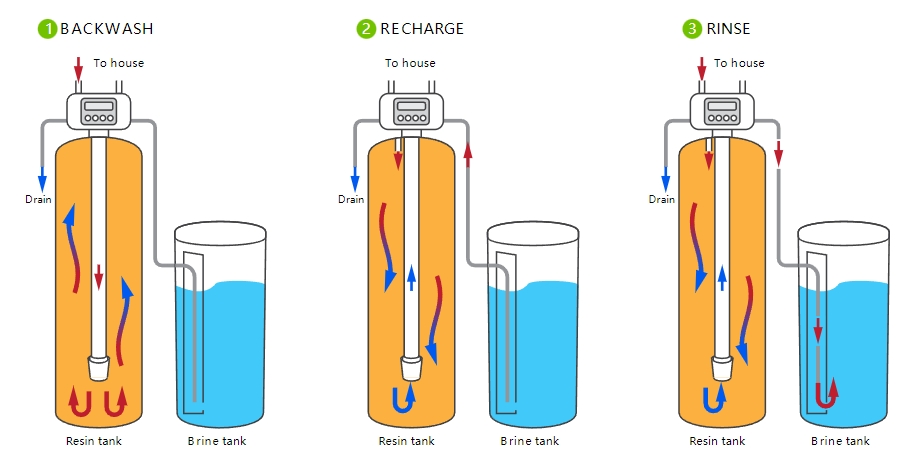 During the regeneration cycle, brine (brackish water created in the brine tank by mixing water and salt) is passed through
the resin tank (either up or down depending on the design). As this brine passes through the tank, sodium ions are
transferred (exchanged) for the hardness ions on the exchange resin and these hardness ions are consequently sent to drain.
This process continues until all the hardness ions are exchanged with the sodium ions (you’ll notice small amounts of salt
going to drain along with the hardness ions) and the bed is considered fully regenerated.
FRP Tanks water softener system double tanks automatic non-stop alternating work
We supply all types of softened water treatment equipment, boiler water softening equipment, industrial water softening equipment,
industrial water softener, water softener, 1-100 tons per hour.
This product is suitable for: boiler soft water, hot water boiler, exchanger, evaporative condenser, air conditioning,
direct combustion engine and other systems of water supply softening. It can also be used in the treatment of living water in hotels,
restaurants, office buildings, apartments, homes, etc. and the softening of water in food, beverage, brewing, laundry, printing and dyeing,
chemical, pharmaceutical and other industries.
During the regeneration cycle, brine (brackish water created in the brine tank by mixing water and salt) is passed through
the resin tank (either up or down depending on the design). As this brine passes through the tank, sodium ions are
transferred (exchanged) for the hardness ions on the exchange resin and these hardness ions are consequently sent to drain.
This process continues until all the hardness ions are exchanged with the sodium ions (you’ll notice small amounts of salt
going to drain along with the hardness ions) and the bed is considered fully regenerated.
FRP Tanks water softener system double tanks automatic non-stop alternating work
We supply all types of softened water treatment equipment, boiler water softening equipment, industrial water softening equipment,
industrial water softener, water softener, 1-100 tons per hour.
This product is suitable for: boiler soft water, hot water boiler, exchanger, evaporative condenser, air conditioning,
direct combustion engine and other systems of water supply softening. It can also be used in the treatment of living water in hotels,
restaurants, office buildings, apartments, homes, etc. and the softening of water in food, beverage, brewing, laundry, printing and dyeing,
chemical, pharmaceutical and other industries.
| Model | Capacity (T/H) | Tank Size | Brine Tank | Resins |
| TK-SF-1000L | 1T | φ250*1390 | 60L | 50 |
| TK-SF-2000L | 2T | φ300*1340 | 60L | 75 |
| TK-SF-3000L | 3T | φ350*1670 | 100L | 100 |
| TK-SF-4000L | 4T | φ400*1670 | 200L | 150 |
| TK-SF-5000L | 5T | φ500*1750 | 200L | 200 |
| TK-SF-8000L | 8T | φ600*1850 | 300L | 325 |
| TK-SF-10000L | 10T | φ750*1850 | 500L | 500 |
| TK-SF-12000L | 12T | φ750*1850 | 500L | 500 |
| TK-SF-15000L | 15T | φ900*1850 | 800L | 700 |
| TK-SF-20000L | 20T | φ1000*1850 | 800L | 800 |
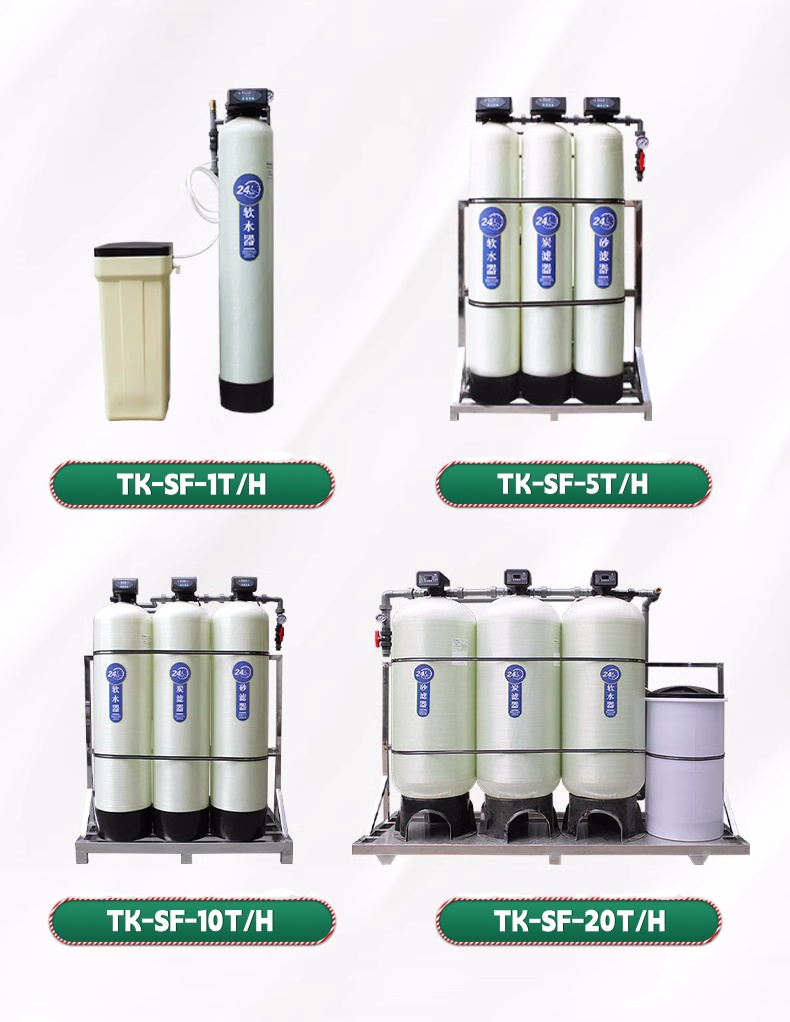 Advantages of this product:
1, the equipment structure is simple, small footprint, easy to install, operate and maintain.
2,Stable performance.
3, the equipment is fully automatic operation, good airtight, no odor and noise in the operating environment.
4, the operating cost of the equipment, cost savings.
Advantages of this product:
1, the equipment structure is simple, small footprint, easy to install, operate and maintain.
2,Stable performance.
3, the equipment is fully automatic operation, good airtight, no odor and noise in the operating environment.
4, the operating cost of the equipment, cost savings.

 Softener role: to scale, soften the water to reduce water hardness, to calcium and magnesium ions, simple installation, small footprint, large water production,
the water can reach the national soft water standards, stable water production, long service life.
Softener role: to scale, soften the water to reduce water hardness, to calcium and magnesium ions, simple installation, small footprint, large water production,
the water can reach the national soft water standards, stable water production, long service life.
Softener role: to scale, soften the water to reduce water hardness, to calcium and magnesium ions, simple installation, small footprint, large water production, the water can reach the national soft water standards, stable water production, long service life.
 What is Water hardness?
Hard water is water that has high dissolved mineral content (as opposed to soft water having a low dissolved mineral content).
Hard water has high concentrations of calcium (Ca2+) and magnesium (Mg2+) ions. Hardness in water is defined as concentration
of multivalent cations. Multivalent cations are cations (metal ions) with a charge greater than 1+, mainly 2+. These cations
include Ca2+ and Mg2+.
What is Water hardness?
Hard water is water that has high dissolved mineral content (as opposed to soft water having a low dissolved mineral content).
Hard water has high concentrations of calcium (Ca2+) and magnesium (Mg2+) ions. Hardness in water is defined as concentration
of multivalent cations. Multivalent cations are cations (metal ions) with a charge greater than 1+, mainly 2+. These cations
include Ca2+ and Mg2+.
 These ions enter a water supply by leaching from minerals (such as limestone) within an aquifer. Common calcium-containing
minerals are calcite and gypsum. A common magnesium mineral is dolomite which also contains calcium. Rainwater and distilled
water are soft, because they contain few ions. Hard water is typically found in ground water (wells) as the water is in direct
contact with minerals which can be dissolved. Surface water (lakes, rivers or streams) is generally soft with very low levels of hardness.
Hard water is generally not harmful to one’s health but can pose serious plumbing problems in both residential and commercial
applications. From the lack of suds formation in bathing and laundry applications to the costly breakdowns in boilers, cooling
towers and other equipment that handle water, water hardness is a serious issue.
The following equilibrium reaction describes the dissolving/formation of calcium carbonate scales:
CaCO3 + CO2 + H2O = Ca2+ + 2HCO3–
Calcium and magnesium ions can be easily removed by the ion exchange process.
What is Ion exchange process?
Water softening is a process that deals with a problem called “hard water.” Hard water is any type of water that contains more
minerals than average tap water. Mostly it has to do with elevated levels of calcium and magnesium, which can make it difficult
for products like soap to dissolve in the water. It can also leave hard water stains on bathtubs or sinks and clog pipes.
Water softening is a process in which the ions of calcium, magnesium and sometimes iron are removed. It is these ions in hard
water that make it difficult for products with other positively charged ions to dissolve in the water. By doing this, the water
softening removes the offending minerals from the water.
These ions enter a water supply by leaching from minerals (such as limestone) within an aquifer. Common calcium-containing
minerals are calcite and gypsum. A common magnesium mineral is dolomite which also contains calcium. Rainwater and distilled
water are soft, because they contain few ions. Hard water is typically found in ground water (wells) as the water is in direct
contact with minerals which can be dissolved. Surface water (lakes, rivers or streams) is generally soft with very low levels of hardness.
Hard water is generally not harmful to one’s health but can pose serious plumbing problems in both residential and commercial
applications. From the lack of suds formation in bathing and laundry applications to the costly breakdowns in boilers, cooling
towers and other equipment that handle water, water hardness is a serious issue.
The following equilibrium reaction describes the dissolving/formation of calcium carbonate scales:
CaCO3 + CO2 + H2O = Ca2+ + 2HCO3–
Calcium and magnesium ions can be easily removed by the ion exchange process.
What is Ion exchange process?
Water softening is a process that deals with a problem called “hard water.” Hard water is any type of water that contains more
minerals than average tap water. Mostly it has to do with elevated levels of calcium and magnesium, which can make it difficult
for products like soap to dissolve in the water. It can also leave hard water stains on bathtubs or sinks and clog pipes.
Water softening is a process in which the ions of calcium, magnesium and sometimes iron are removed. It is these ions in hard
water that make it difficult for products with other positively charged ions to dissolve in the water. By doing this, the water
softening removes the offending minerals from the water.
 A water softener is a device that exchanges cations. What this essentially does is take the cations of calcium and magnesium
(the two most common causes of hard water) and replace them with the cations of another substance. Most typically the ions are
exchanged with ions from dissolved sodium chloride salt (brine).
Why we choose Ticktock Water softener?
Eliminating or reducing water hardness is done with a piece of equipment known as a water softener. It is inside this softener
where the ion exchange process occurs. A softener is comprised of different components, each having their own unique purpose.
The heart of the softener is the mineral tank which is a pressure vessel usually constructed out of fiberglass. These tanks are
filled with negatively charged ion exchange resin. The brains of the softener lie in the control valve or softener head as it is
commonly referred to. Most popular water softeners have an automatic regenerating system. The most basic type has an electric
timer that flushes and recharges the system on a regular schedule. During recharging, soft water is not available. A second type
of control uses a computer that watches how much water is used. When enough water has passed through the mineral tank to have
depleted the beads of sodium, the computer triggers regeneration. These softeners often have reserve resin capacity, so that
some soft water will be available during recharging. A third type of control uses a mechanical water meter to measure water
usage and initiate recharging. The advantage of this system is that no electrical components are required and the mineral tank
is only recharged when necessary.
When it is equipped with two mineral tanks, softened water is always available, even when the unit is recharging.
A water softener is a device that exchanges cations. What this essentially does is take the cations of calcium and magnesium
(the two most common causes of hard water) and replace them with the cations of another substance. Most typically the ions are
exchanged with ions from dissolved sodium chloride salt (brine).
Why we choose Ticktock Water softener?
Eliminating or reducing water hardness is done with a piece of equipment known as a water softener. It is inside this softener
where the ion exchange process occurs. A softener is comprised of different components, each having their own unique purpose.
The heart of the softener is the mineral tank which is a pressure vessel usually constructed out of fiberglass. These tanks are
filled with negatively charged ion exchange resin. The brains of the softener lie in the control valve or softener head as it is
commonly referred to. Most popular water softeners have an automatic regenerating system. The most basic type has an electric
timer that flushes and recharges the system on a regular schedule. During recharging, soft water is not available. A second type
of control uses a computer that watches how much water is used. When enough water has passed through the mineral tank to have
depleted the beads of sodium, the computer triggers regeneration. These softeners often have reserve resin capacity, so that
some soft water will be available during recharging. A third type of control uses a mechanical water meter to measure water
usage and initiate recharging. The advantage of this system is that no electrical components are required and the mineral tank
is only recharged when necessary.
When it is equipped with two mineral tanks, softened water is always available, even when the unit is recharging.
 <img class="alignnone wp-image-4849" src=”https://www.ticktockwater.com/wp-content/uploads/2023/09/how-to-work-sf-scaled.jpg” alt=”” width=”579″ height=”470″ />
The third main component of a water softening system is the brine tank. The brine tank is basically a storage tank for sodium
chloride (NaCl) or potassium chloride (KCL) which is mixed with water during the brine refill and regeneration cycles.
This brine (a concentrated solution of salt water) is drawn back into the mineral tank during the regeneration phase to
replenish the softener bed. The salt or potassium chloride is a sacrificial media and must be replenished on a regular
basis to ensure adequate softening form the device.
What is ion exchange resin?
The primary media contained within a water softener is known as ion exchange resin. This resin is basically an insoluble
matrix typically in the shape of small (1-2 mm diameter) beads. The material has highly developed structure of pores on
the surface of which are sites with easily trapped and released ions. This process of trapping of ions happens with a
simultaneous releasing of other ions resulting in the term ion-exchange. Ion exchange resins can be manufactured to
selectively prefer one, or perhaps several different types of ions. Typically, these resins are based on cross-linked polystyrene.
How long is the softener cycles?
Water softeners have to primary functions; the Softening cycle and the Regeneration cycle. In the Softening cycle,
water enters the softener and passes through the ion exchange resin charged with sodium (Na+) ions. As hard water
passes through the resin, hardness ions (Ca2+ & Mg2+) are physically exchanged with the sodium ions on the ion
exchange resin. This process continues until the resin becomes saturated with hardness ions and depleted of sodium ions.
As the resin nears exhaustion, its ability to soften (exchange hardness ions with sodium ions) is limited.
For the softener to function properly at this point-in-time, the Regeneration cycle must be initiated.
<img class="alignnone wp-image-4849" src=”https://www.ticktockwater.com/wp-content/uploads/2023/09/how-to-work-sf-scaled.jpg” alt=”” width=”579″ height=”470″ />
The third main component of a water softening system is the brine tank. The brine tank is basically a storage tank for sodium
chloride (NaCl) or potassium chloride (KCL) which is mixed with water during the brine refill and regeneration cycles.
This brine (a concentrated solution of salt water) is drawn back into the mineral tank during the regeneration phase to
replenish the softener bed. The salt or potassium chloride is a sacrificial media and must be replenished on a regular
basis to ensure adequate softening form the device.
What is ion exchange resin?
The primary media contained within a water softener is known as ion exchange resin. This resin is basically an insoluble
matrix typically in the shape of small (1-2 mm diameter) beads. The material has highly developed structure of pores on
the surface of which are sites with easily trapped and released ions. This process of trapping of ions happens with a
simultaneous releasing of other ions resulting in the term ion-exchange. Ion exchange resins can be manufactured to
selectively prefer one, or perhaps several different types of ions. Typically, these resins are based on cross-linked polystyrene.
How long is the softener cycles?
Water softeners have to primary functions; the Softening cycle and the Regeneration cycle. In the Softening cycle,
water enters the softener and passes through the ion exchange resin charged with sodium (Na+) ions. As hard water
passes through the resin, hardness ions (Ca2+ & Mg2+) are physically exchanged with the sodium ions on the ion
exchange resin. This process continues until the resin becomes saturated with hardness ions and depleted of sodium ions.
As the resin nears exhaustion, its ability to soften (exchange hardness ions with sodium ions) is limited.
For the softener to function properly at this point-in-time, the Regeneration cycle must be initiated.
 During the regeneration cycle, brine (brackish water created in the brine tank by mixing water and salt) is passed through
the resin tank (either up or down depending on the design). As this brine passes through the tank, sodium ions are
transferred (exchanged) for the hardness ions on the exchange resin and these hardness ions are consequently sent to drain.
This process continues until all the hardness ions are exchanged with the sodium ions (you’ll notice small amounts of salt
going to drain along with the hardness ions) and the bed is considered fully regenerated.
FRP Tanks water softener system double tanks automatic non-stop alternating work
We supply all types of softened water treatment equipment, boiler water softening equipment, industrial water softening equipment,
industrial water softener, water softener, 1-100 tons per hour.
This product is suitable for: boiler soft water, hot water boiler, exchanger, evaporative condenser, air conditioning,
direct combustion engine and other systems of water supply softening. It can also be used in the treatment of living water in hotels,
restaurants, office buildings, apartments, homes, etc. and the softening of water in food, beverage, brewing, laundry, printing and dyeing,
chemical, pharmaceutical and other industries.
During the regeneration cycle, brine (brackish water created in the brine tank by mixing water and salt) is passed through
the resin tank (either up or down depending on the design). As this brine passes through the tank, sodium ions are
transferred (exchanged) for the hardness ions on the exchange resin and these hardness ions are consequently sent to drain.
This process continues until all the hardness ions are exchanged with the sodium ions (you’ll notice small amounts of salt
going to drain along with the hardness ions) and the bed is considered fully regenerated.
FRP Tanks water softener system double tanks automatic non-stop alternating work
We supply all types of softened water treatment equipment, boiler water softening equipment, industrial water softening equipment,
industrial water softener, water softener, 1-100 tons per hour.
This product is suitable for: boiler soft water, hot water boiler, exchanger, evaporative condenser, air conditioning,
direct combustion engine and other systems of water supply softening. It can also be used in the treatment of living water in hotels,
restaurants, office buildings, apartments, homes, etc. and the softening of water in food, beverage, brewing, laundry, printing and dyeing,
chemical, pharmaceutical and other industries.
| Model | Capacity (T/H) | Tank Size | Brine Tank | Resins |
| TK-SF-1000L | 1T | φ250*1390 | 60L | 50 |
| TK-SF-2000L | 2T | φ300*1340 | 60L | 75 |
| TK-SF-3000L | 3T | φ350*1670 | 100L | 100 |
| TK-SF-4000L | 4T | φ400*1670 | 200L | 150 |
| TK-SF-5000L | 5T | φ500*1750 | 200L | 200 |
| TK-SF-8000L | 8T | φ600*1850 | 300L | 325 |
| TK-SF-10000L | 10T | φ750*1850 | 500L | 500 |
| TK-SF-12000L | 12T | φ750*1850 | 500L | 500 |
| TK-SF-15000L | 15T | φ900*1850 | 800L | 700 |
| TK-SF-20000L | 20T | φ1000*1850 | 800L | 800 |
 Advantages of this product:
1, the equipment structure is simple, small footprint, easy to install, operate and maintain.
2,Stable performance.
3, the equipment is fully automatic operation, good airtight, no odor and noise in the operating environment.
4, the operating cost of the equipment, cost savings.
Advantages of this product:
1, the equipment structure is simple, small footprint, easy to install, operate and maintain.
2,Stable performance.
3, the equipment is fully automatic operation, good airtight, no odor and noise in the operating environment.
4, the operating cost of the equipment, cost savings.

 Softener role: to scale, soften the water to reduce water hardness, to calcium and magnesium ions, simple installation, small footprint, large water production,
the water can reach the national soft water standards, stable water production, long service life.
Softener role: to scale, soften the water to reduce water hardness, to calcium and magnesium ions, simple installation, small footprint, large water production,
the water can reach the national soft water standards, stable water production, long service life.
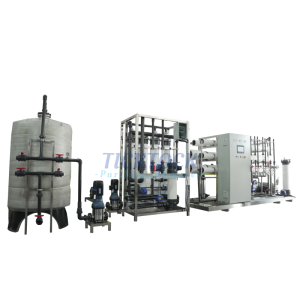




We are a professional water treatment company dedicated to providing high-quality water treatment solutions to customers worldwide. We have years of industry experience and professional knowledge, as well as a wide supply chain network, to provide comprehensive services to customers.
Weclome to visit us!
We are a professional water treatment company dedicated to providing high-quality water treatment solutions to customers worldwide. We have years of industry experience and professional knowledge, as well as a wide supply chain network, to provide comprehensive services to customers.